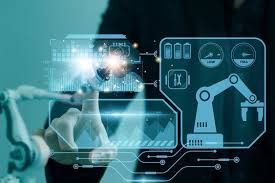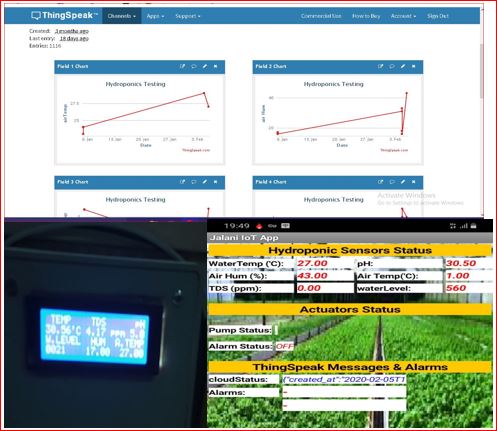Introduction
Imagine a factory where machines predict failures before they happen, robots collaborate seamlessly with human workers, and production lines adapt dynamically to demand changes. This isn’t a futuristic dream it’s the reality of smart factories powered by artificial intelligence (AI). AI is revolutionizing manufacturing by enhancing worker efficiency, reducing downtime, and optimizing production workflows. But how exactly does AI contribute to worker efficiency in smart factories? Let’s dive in.
The Evolution of Smart Factories
From Traditional Manufacturing to Industry 4.0
Manufacturing has evolved from manual labor and mechanical automation to the digital and AI-driven smart factory. Industry 4.0 integrates AI, the Internet of Things (IoT), and big data to create highly efficient production environments.
The Role of AI in Smart Factories
AI plays a crucial role in analyzing data, making real-time decisions, and augmenting human capabilities. Unlike traditional automation, AI continuously learns and adapts, optimizing performance with each cycle.
Enhancing Worker Productivity with AI
AI-Powered Predictive Maintenance
One of the most significant ways AI improves efficiency is through predictive maintenance. AI algorithms analyze sensor data from machines to detect early signs of wear and tear, reducing unexpected breakdowns and minimizing downtime.
Automated Quality Control
AI-driven image recognition and machine learning models inspect products for defects more accurately and faster than human workers, ensuring high-quality output while reducing waste.
Intelligent Robotics and Cobots
Collaborative robots (cobots) work alongside humans to perform repetitive tasks, lifting heavy materials and assembling components with precision. This reduces worker fatigue and increases productivity.
Smart Scheduling and Workflow Optimization
AI analyzes production schedules, workforce availability, and supply chain logistics to optimize workflows. This results in streamlined operations, reducing idle time and enhancing worker efficiency.
AI-Powered Safety Enhancements
Real-Time Hazard Detection
AI-powered computer vision detects potential hazards, such as machine malfunctions or unsafe worker behavior, alerting personnel in real-time to prevent accidents.
Wearable AI for Worker Safety
Smart wearables equipped with AI monitor workers’ health metrics, such as heart rate and fatigue levels, providing alerts when conditions become hazardous.
Ergonomic Assistance Systems
AI helps design ergonomic workstations by analyzing movement patterns, reducing strain injuries, and improving overall worker well-being.
AI in Decision-Making and Training
AI-Driven Data Analytics for Informed Decisions
AI processes vast amounts of data to provide actionable insights, helping managers make informed decisions on resource allocation, workflow adjustments, and production forecasting.
AI-Powered Virtual Training
Virtual reality (VR) and AI-powered simulations train workers in a safe environment, reducing the learning curve and enhancing skill development without risking real-world errors.
Personalized Learning Algorithms
AI adapts training programs based on individual performance, ensuring workers receive customized guidance to improve their efficiency and accuracy.
The Future of AI in Smart Factories
Fully Autonomous Factories
With advancements in AI, future factories may become fully autonomous, with minimal human intervention required for daily operations.
AI-Driven Supply Chain Optimization
AI will play a larger role in supply chain management, predicting material shortages and optimizing logistics to ensure seamless production.
Ethical Considerations and Workforce Adaptation
While AI improves efficiency, it also raises ethical concerns about job displacement. Companies must focus on reskilling workers to adapt to AI-integrated environments.
Conclusion
AI is not replacing workers it’s empowering them. By automating mundane tasks, improving safety, and optimizing workflows, AI allows workers to focus on high-value activities that require creativity and problem-solving. Smart factories leveraging AI are setting new benchmarks in efficiency, productivity, and safety. As AI technology advances, embracing it will be key to staying competitive in the ever-evolving manufacturing landscape.
FAQs
1. How does AI help in predictive maintenance?
AI analyzes real-time sensor data to detect early signs of machine failure, allowing proactive maintenance and reducing unexpected downtime.
2. Can AI replace human workers in smart factories?
AI complements human workers by automating repetitive tasks and enhancing decision-making, but human oversight remains essential for complex operations.
3. What are cobots, and how do they improve efficiency?
Cobots, or collaborative robots, work alongside humans to perform tasks efficiently, reducing physical strain and increasing productivity.
4. How does AI contribute to worker safety in smart factories?
AI-powered wearables, hazard detection systems, and ergonomic analysis help prevent accidents and ensure a safer work environment.
5. What is the future of AI in manufacturing?
AI will drive further automation, optimize supply chains, and enable fully autonomous factories while requiring ongoing worker adaptation and reskilling.
Meta Description: Discover how AI enhances worker efficiency in smart factories through predictive maintenance, cobots, smart scheduling, and safety improvements.


